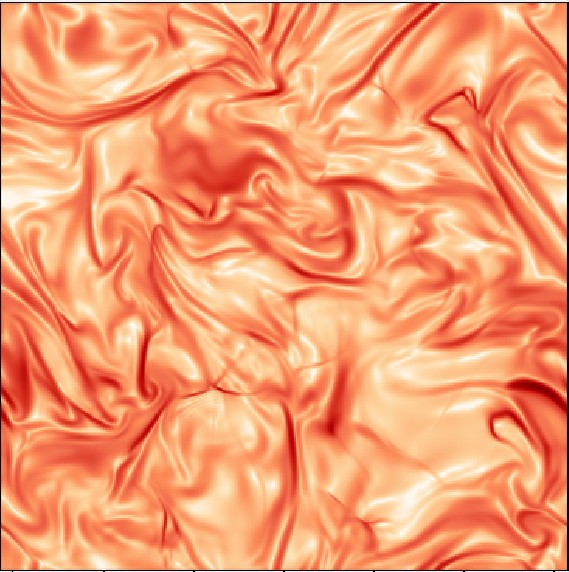Turbulence

A fluid with low enough viscosity or high enough characteristic speed (in summary, high Reynolds number) exhibits a chaotic behavior, with velocity, density and other properties changing in space and time in a random-like manner. Under such conditions, it is said that the fluid is turbulent or that it is in a turbulent regime. In spite of its apparent complexity, a turbulent fluid can be characterized by the statistical properties of its fluctuations. One of the main results drawn from this statistical description was arranged into a poem by the physicist and mathematician L.F. Richardson: “Big whirls have little whirls, Which feed on their velocity, And little whirls have lesser whirls, and so on to viscosity”. In other words, turbulence is a mechanism that transfers energy from large scale fluctuations into smaller scales, creating smaller fluctuations, and the process continues across scales until the fluctuations are so small that dissipation mechanisms make them contribute to the internal energy of the system.
The former process is known as the energy cascade. It is assumed that the rate at which turbulence transfers energy across scales is independent of the scales themselves and therefore, the so called “energy cascade rate” equals the rate at which the energy of the smallest fluctuations is being dissipated. The dissipation rate is determinant for many processes in astrophysical plasmas, from the production of certain chemical species in molecular clouds to the acceleration of particles and other phenomena were plasma temperature is relevant. Hence, the interest of using the energy cascade rate as a proxy for the dissipation rate. While dissipative mechanisms are still a matter of debate and the scales at which dissipation takes place cannot yet be measured with the sensitivity of nowadays instruments, the scales at which turbulence transfer energy can be accurately measured.

Figure: Schematic of the energy cascade.
In our group, we work with the Karman-Howarth-Monin (KHM) equations, which describe the balance of energy across scales. With a few assumptions, the KHM equations allow to measure the energy cascade rate in turbulent plasmas, such as the solar wind or the magnetosheath. We focus on the derivation of KHM equations its validation with numerical simulations and its use with both, simulations and in-situ data from spacecrafts in the heliosphere and the magnetosphere. Our goal is to get a better understanding on how plasma properties can alter the energy cascade rate, but also how plasma turbulence is affected by other phenomena, such as magnetic reconnection, the presence of heavy ions in the plasma or the generation of ion-cyclotron waves.






